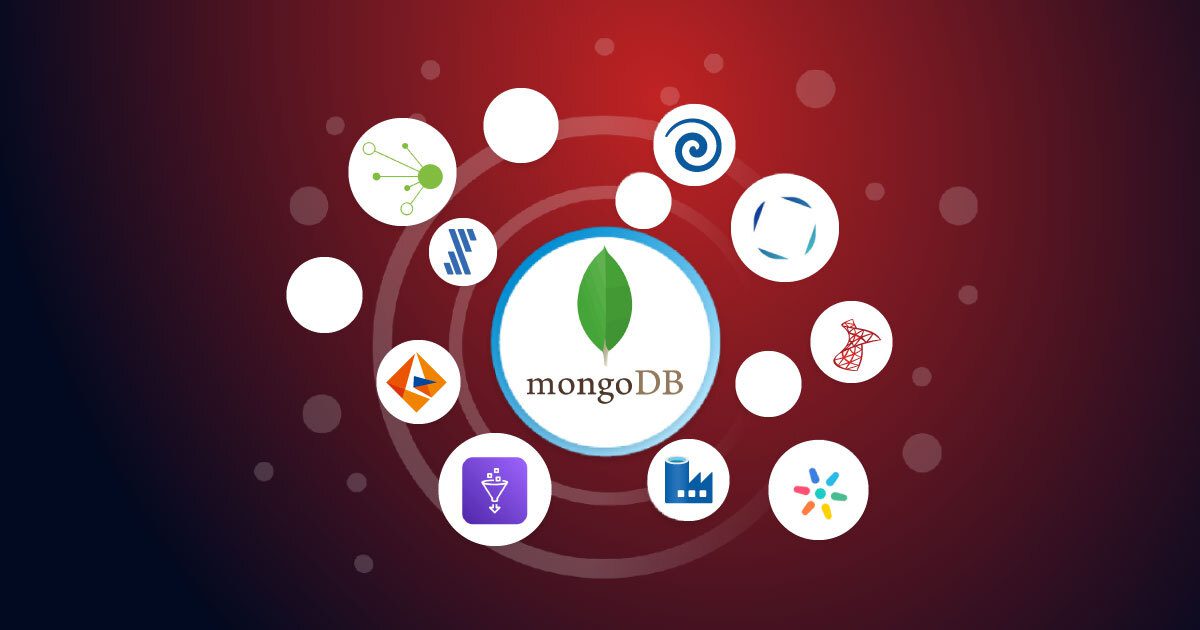As a popular NoSQL database, MongoDB offers significant advantages like flexibility, scalability, and high performance, making it a common choice for modern data-driven applications. However, in most enterprise contexts, MongoDB must co-exist and integrate with existing traditional databases and data warehouses built on SQL. Extract, Transform, and Load (ETL) processes become vital to onboard MongoDB data into data lakes and warehouses to unite disparate sources. ETL tools simplify aggregating data from MongoDB and then transforming and moving it into target data stores. However, with a glut of ETL solutions in the market, identifying the top MongoDB ETL tools can be challenging.
This guide will provide a comprehensive overview of the best ETL software options for MongoDB in 2024 based on critical considerations like
- Pricing models
- Supported integrations
- Ease of use
- Transformational capabilities
- Performance optimization features
- Scalability
What Is ETL?
ETL stands for extract, transform, load. It is the process of taking data from one or more sources, preparing it for analytical use, and loading it into a database or data warehouse. ETL enables unified access to integrated, consistent, and cleansed data.
ETL processes have three key steps
- First, data is extracted from transactional systems or other sources.
- Next, transformations reformat data, deduplicate records, apply business rules, etc.
- Finally, data gets loaded into target databases or warehouses. Automating these tasks boosts efficiency.
What are ETL Tools?
ETL tools are software solutions that automate the execution of ETL processes for acquiring, transforming, and migrating data across storage systems, databases, and analytics platforms.
They furnish intuitive visual workflows to consolidate and refine data from sources like MongoDB for analytical readiness. Capabilities like scheduling, monitoring, debugging, and optimized runtimes simplify ETL. Top MongoDB ETL tools include Pentaho Data Integration, Hevo, AWS Glue, etc.

Types of Mongo DB ETL Tools
There are three main types of top MongoDB ETL tools:
- Cloud ETL: These are SaaS solutions requiring no hardware or infrastructure management. They are purchased via subscription pricing, scaling dynamically. Cloud ETL examples include Hevo Data, Fivetran, and Stitch.
- On-Premise ETL: These call for installing ETL server software on local hardware or VM instances. They enable isolation compliance but raise hosting overhead. Examples – Informatica PowerCenter, Pentaho.
- Platform ETL: These furnish not just ETL abilities but an integrated stack of data services – pipelines, storage, streaming, and BI. They reduce tool sprawl through convergence. AWS Glue on Amazon’s cloud platform illustrates this model.
Most modern teams prefer cloud ETL tools for agility and turnkey management or platform ETL for tight feature alignment. However, legacy on-premise ETL persists for some regulated industries.
Top MongoDB ETL Tools
We have compiled details on both enterprise-scale commercial tools as well as lightweight open-source solutions across areas like:
1. Hevo Data
2. Pentaho
3. Talend
4. Stitch
5. AWS Glue
6. Fivetran
7. Informatica PowerCenter
8. Azure Data Factory
9. Transporter
10. HVR Sync
11. Microsoft SSIS
Let’s examine the strengths and weaknesses of the top MongoDB ETL choices to simplify your decision making.
Hevo Data
It offers a fully managed, real-time ETL service purpose-built to integrate data from various sources like MongoDB into data warehouses, lakes, and other destinations.
Hevo connects MongoDB clusters or Atlas DBaaS deployments to 100+ destinations across data warehouses (Snowflake, BigQuery, Amazon Redshift), data lakes (Amazon S3 Google Cloud Storage), BI tools (Tableau, Looker, Power BI), and more.
Pricing
The tool follows a straightforward pay-as-you-go pricing model based on the number of rows loaded daily into the destination. For small workloads under 100K rows/day, plans start at $99/month.
Key Features
- Real-time replication ensuring ultra-low latency ETL
- Intuitive drag-drop workflow interface
- Advanced transformation functionality like aggregations, pivots, filters, etc
- Customizable scheduling with granular cadences
- Detailed data loading monitoring
- Live support 24/7, from onboarding to ongoing optimization
Pros
- Simple, fast, no-code setup delivering rapid time-to-value
- Cutting-edge reliability with advanced data infrastructure ensures no data loss
- Affordable pricing for smaller teams on a budget
- Works with MongoDB clusters on-premise or in the cloud
Cons
- Less flexibility to customize ETL logic compared to open-source self-hosted tools
- Additional transaction costs apply for high daily workload (100M+ rows) teams
Pentaho
Owned by data giants Hitachi Vantara, Pentaho offers comprehensive data integration and analytics capabilities via its ETL tool Pentaho Data Integration (PDI).
Pentaho ETL supports MongoDB databases and provides connectors for leading data platforms like Snowflake, Redshift, Azure Synapse, Google BigQuery, Excel, Salesforce, and legacy relational databases.
Pricing
For mid-size and larger businesses, Pentaho licenses start at roughly $25,000 per year, including support based on core count. They also offer an open-source community edition free for up to 3 users.
Key Features
- Drag-drop interface to visually build data workflows
- SQL, Python, & Java scripting for complex logic
- Broad transformation library
- Meta-driven ETL approach with reusable templates
- Data lineage tracking
- Role-based access control for security policies
- High volume batch data loading
Pros
- Mature ETL toolchain with extensive capabilities
- Ideal for larger firms with complex use cases
- The on-premise deployment option suits data residency policies
- Open source edition available
Cons
- Steep learning curve limiting citizen developer accessibility
- Higher operational overhead than fully managed services
- Generally higher TCO than lighter-weight ETL options
Stitch
It provides a SaaS-based ETL pipeline builder from data experts Talend specifically for modern data teams using MongoDB, MySQL, Postgres, and more.
Stitch ships with 130+ turn-key integrations for all major data destinations – Snowflake, Redshift, BigQuery, Databricks, S3, Kafka, etc.
Pricing
Its pricing is based on the historical data volume onboarded alongside the number of active databases integrated. Plans start at $100/month for 5M rows and smaller workloads. Unlimited pricing at $1,000/month covers 100s of billions of rows.
Key Features
- Automatic schema detection, structuring, and syncing
- Incremental data migration preserving historical integrity
- Advanced transformation blocks – derived columns, nest data, etc.
- Granular replication tuning and scheduling
- SSL encryption protection
- Alerting and monitoring with proactive support
- Straightforward pricing without confusing extras
Pros
- Fast setup, delivering time-to-value within minutes
- Lightweight cloud infrastructure reducing hosting hassles
- Top-notch support throughout the process
- Pay-as-you-go pricing that dynamically meets needs
Cons
- Narrower set of 200+ pre-built integrations vs. DIY open-source ETL
- Additional fees for cross-region data transfer beyond cloud provider defaults
Talend Open Studio
Backed by Goldman Sachs, Talend offers an open-source ETL tool for data management called Talend Open Studio alongside paid versions with expanded features.
Talend natively integrates with 1200+ applications spanning MongoDB, MySQL, Postgres, Redshift, Snowflake, Databricks, SAP, Salesforce, etc.
Pricing
Talend Open Source is completely free with no restrictions. Paid subscriptions add premium functionality, dedicated support, etc. Talend Cloud costs roughly $1,775 yearly based on workload.
Key Features
- Intuitive drag-and-drop designer for no-code ETL
- In-depth transforms like pivots, lookups, aggregations, etc
- Native Protocol support for MongoDB, MySQL, etc
- Data quality and validation checks
- Detailed runtime logs and reports
- Schedule coordinator for automation
- Role-based access control
Pros
- Affordable pricing tiers make powerful ETL accessible
- Runtime containerization and cloud infrastructure optimize performance
- Starter plan available for smaller workloads
- Open-source access is helpful for testing
Cons
- Less complimentary ETL features are offered compared to costly proprietary ETL suites
- Talend Cloud lacks the same breadth of connectors as Talend Open Studio
AWS Glue
Released in 2017, AWS Glue furnishes serverless ETL natively integrated into AWS’s data services.
AWS Glue connects to a wide range of AWS data stores encompassing S3, Redshift, RDS, DynamoDB, etc. It is also integrated with third-party platforms like MongoDB Atlas, MySQL, Oracle, and SQL Server.
Key Features
- Managed ETL infrastructure without servers
- PySpark, Python, & Scala support for ETL scripts
- Spark optimization under the hood
- Data catalog for metadata, lineages, etc
- Job bookmarking for fault tolerance
- Integration with AWS Lake Formation
- Granular IAM access policies
Pros
- Cost-efficient pay-per-use model
- Tight AWS cloud ecosystem integration
- Automated complex ETL pipelines
Cons
- Vendor lock-in limits multi-cloud portability
- Steep learning curve mastering AWS data services
Fivetran
Fivetran delivers automated data integration through turn-key connectors that move data from various sources into destinations for analysis while handling transformations.
It supports a wide range of integrations, enabling automated data movement from diverse sources to designated destinations for analysis.
Pricing
Its pricing follows a pay-as-you-go model based on monthly data rows loaded. For small teams under 100K rows/month, plans start at $1,000/month. Volume pricing up to quadrillions of rows scales to the largest enterprises.
Key Features:
- Turn-key connectors for automated data integration.
- Diverse source compatibility.
- Efficient data transformations.
- Tailored pricing for unique needs.
- Adapts from small teams to large enterprises.
Pros:
- Automated process saves time and resources.
- Diverse integration options for varied data needs.
- Adapts to growing data volumes.
- Suitable for businesses of all sizes.
Cons:
- High minimum pricing for small teams.
- Users need time to learn platform features.
Informatica PowerCenter
Introduced in the late 1990s, Informatica Power Center is a widely-used ETL (Extract, Transform, Load) tool that facilitates smooth data integration across various sources, offering robust data transformation and workflow capabilities.
It supports integrations with diverse databases, applications, and cloud services.
Pricing:
The starting price is $2,000 per month, with a free trial available.
Key Features
- A broad range of APIs for customization & extensions
- AI-driven innovative data mapping & modeling
- Multidimensional data quality profiling
- Advanced transformation library
- Metadata-driven architecture
- Elastic on-demand scaling
Pros
- Ultra-high performance for large volumes
- End-to-end data management capabilities
- Industry-leading proprietary ETL tool
Cons
- Complex & expensive tool requiring specialization
- Primarily focused on relational data sources
- The steep learning curve for new users
Azure Data Factory
Launched by Microsoft in 2015, Azure Data Factory is a cloud-based data integration service designed for orchestrating and automating data workflows.
It smoothly integrates with various Azure services and supports hybrid data integration scenarios, enabling users to create, schedule, and manage data pipelines.
Key Features
- Built-in integration runtime providing scale & security
- Integrated with Azure data & analytics services
- REST API support for custom activities
- Visual no-code Azure portal interface
- Supports SSIS package migration
- Data flow debugging capabilities
Pros
- Tight integration as Microsoft’s native ETL service
- Cost-optimized with serverless infrastructure
- Interoperability with the broader Azure ecosystem
Cons
- Multi-cloud support remains limited
- Pricing complexities being usage-based
Transporter
Introduced as a lightweight data integration tool, Transporter provides a simplified approach to moving and transforming data between different systems. While its functionalities are more streamlined than more extensive ETL tools, it offers cost-effective solutions for basic data transport needs.
Pricing
Transporter is totally free and open-source.
Key Features
- transporter agent model enables distributed deployments
- JavaScript SDK for coding custom data flows
- Lightweight open-source ETL tool
- CLI administration and automation
- MongoDB query engine integration
Pros
- ES6 async/await syntax for intuitive scripting
- Cost-effective open-source foundation
- A simple single binary setup
Cons
- Limited out-of-box components require custom coding
- DIY tool requiring DevOps skills
HVR Sync
HVR Sync, introduced as a real-time data replication and integration solution, focuses on enabling high-volume and high-velocity data movement. It supports real-time data integration between various databases and platforms, ensuring data consistency across the enterprise.
Key Features
- Ultra low-latency continuous data replication
- Log-driven change data capture (CDC)
- Conflict detection with configurable policies
- Data replication monitoring dashboards
- Dynamic data masking for security
- Role-based access control
Pros
- Leading enterprise-scale data replication tool
- Real-time data integration optimized for ETL
- Decoupled architecture providing HA
Cons
- Steep learning curve mastering functionality
- Higher operational overhead vs. fully managed ETL
Microsoft SSIS
Microsoft SQL Server Integration Services (SSIS) was introduced with SQL Server 2005, offering a comprehensive ETL solution within the Microsoft SQL Server ecosystem. It supports integration with various data sources and destinations, providing a flexible platform for building data integration solutions.
Key Features
- Visual drag-drop Toolkit designer
- Deep integration across the Microsoft data platform
- A broad set of built-in transformations
- Package deployment model
- Enterprise-grade performance & scale
- Data quality profiling & cleansing
Pros
- Mature ETL toolchain with rich features
- Optimized for Microsoft data ecosystem
- On-premise SSIS Agent administration
Cons
- Designed foremost for relational data flows
- Prohibitive licensing model for smaller teams
How to Choose a Top MongoDB ETL Tools?
Carefully evaluate key elements like:
- Existing infrastructure
- Pricing models
- Level of coding skills needed
- Scalability requirements
- Ease of use
Also, assess needs around data volumes, transformation complexity, real-time vs. batch processing, cloud vs. on-premise hosting, multi-region availability, etc.
Finally, validate functional completeness, developer productivity, and customer support reliability through trials before procurement.
Conclusion
MongoDB has emerged as a versatile modern database empowering applications from analytics to mobile to the Internet of Things. For organizations with an existing data infrastructure centered around data warehouses and lakes, ETL processes enable the integration of MongoDB with these SQL-based platforms.
Furthermore, we explored the top MongoDB ETL tools’ core capabilities, strengths, and limitations spanning commercial closed-source and open-source technologies. Powerful tools like Informatica Power Center and Pentaho suit demanding tasks but have steep learning curves. User-friendly options like Stitch and Hevo Data are great for lean teams but have limited customization.




